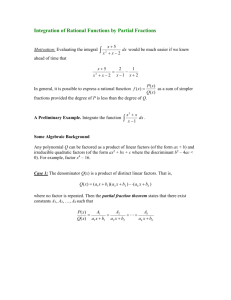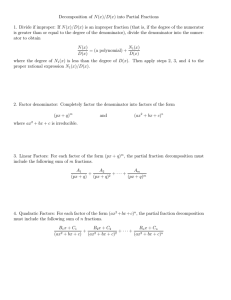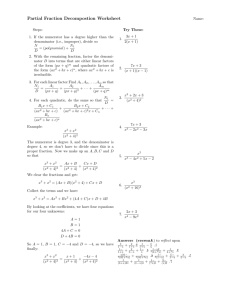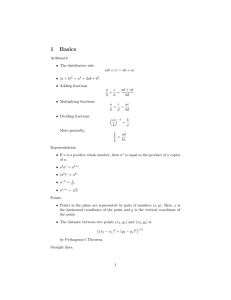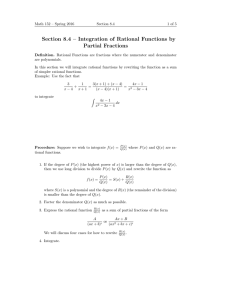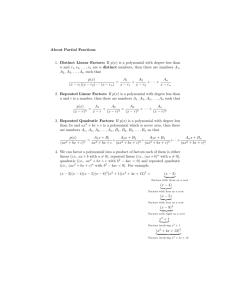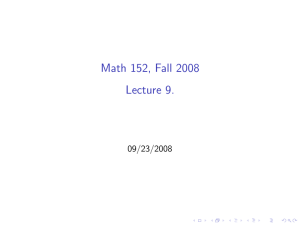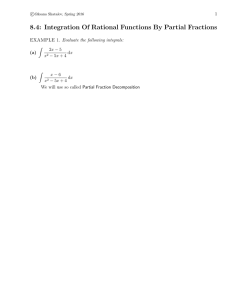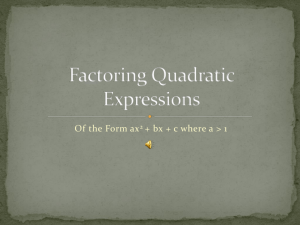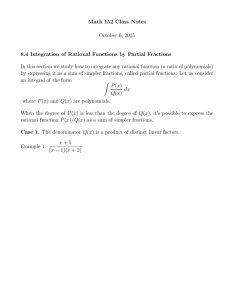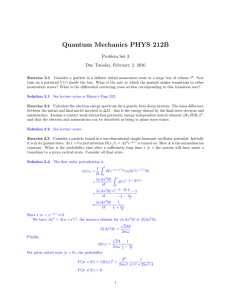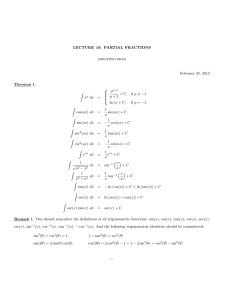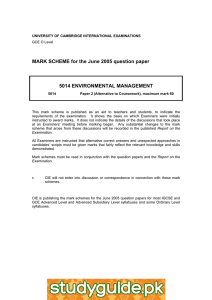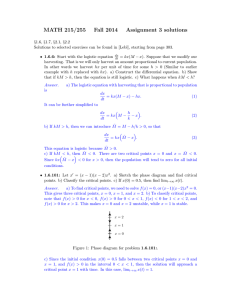Chapter 8. Techniques of integration
advertisement
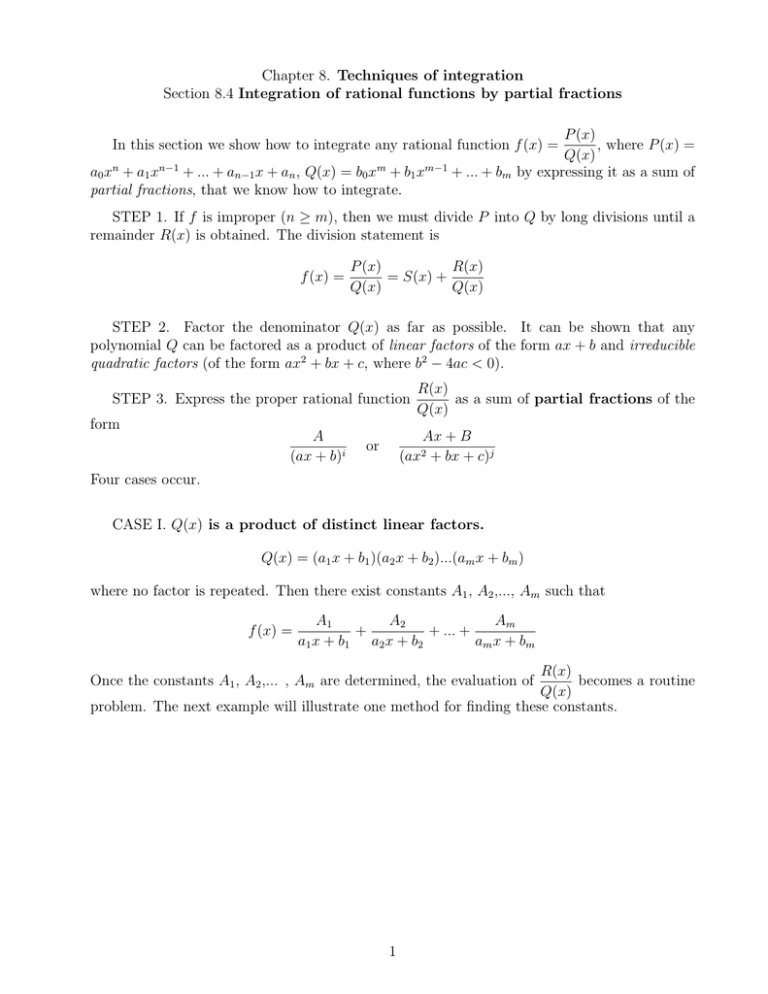
Chapter 8. Techniques of integration Section 8.4 Integration of rational functions by partial fractions P (x) , where P (x) = Q(x) a0 xn + a1 xn−1 + ... + an−1 x + an , Q(x) = b0 xm + b1 xm−1 + ... + bm by expressing it as a sum of partial fractions, that we know how to integrate. In this section we show how to integrate any rational function f (x) = STEP 1. If f is improper (n ≥ m), then we must divide P into Q by long divisions until a remainder R(x) is obtained. The division statement is f (x) = P (x) R(x) = S(x) + Q(x) Q(x) STEP 2. Factor the denominator Q(x) as far as possible. It can be shown that any polynomial Q can be factored as a product of linear factors of the form ax + b and irreducible quadratic factors (of the form ax2 + bx + c, where b2 − 4ac < 0). STEP 3. Express the proper rational function form A (ax + b)i R(x) as a sum of partial fractions of the Q(x) Ax + B (ax2 + bx + c)j or Four cases occur. CASE I. Q(x) is a product of distinct linear factors. Q(x) = (a1 x + b1 )(a2 x + b2 )...(am x + bm ) where no factor is repeated. Then there exist constants A1 , A2 ,..., Am such that f (x) = A2 Am A1 + + ... + a1 x + b 1 a2 x + b 2 am x + b m R(x) becomes a routine Q(x) problem. The next example will illustrate one method for finding these constants. Once the constants A1 , A2 ,... , Am are determined, the evaluation of 1 Z4 Example 1. Evaluate 4x − 1 dx +x−2 x2 2 2 CASE II. Q(x) is a product of linear factors, some of which are repeated. Suppose the first linear factor a1 x + b1 is repeated r times; that is, (a1 x + b1 )r occurs in factorization of Q(x). Then instead of the single term A1 /(a1 x + b1 ), we would use A2 A1 Ar + + ... + 2 a1 x + b1 (a1 x + b1 ) (a1 x + b1 )r Z Example 2. Evaluate 5x2 + 6x + 9 dx (x + 1)2 (x − 3)2 3 CASE III Q(x) contains irreducible quadratic factors none of which is repeated. If Q(x) has the factor ax2 + bx + c, where b2 − 4ac < 0, then the corresponding fraction is Ax + B ax2 + bx + c where A and B are constants to be determined. Ax + B can be integrating by completing the square in the denominator. The term 2 ax + bx + c Z 3x3 − x2 + 6x − 4 Example 3. Find dx (x2 + 1)(x2 + 2) 4 CASE IV Q(x) contains a repeated irreducible factor. If Q(x) has the factor (ax2 + bx + c)r , where b2 − 4ac < 0, then instead of the single partial Ax + B fraction 2 , the sum ax + bx + c A1 x + B1 A2 x + B2 Ar x + Br + + ... + 2 2 2 ax + bx + c (ax + bx + c) (ax2 + bx + c)r occurs in the partial fraction decomposition of R(x)/Q(x). Each of these terms can be integrated by completing the square and making the tangent substitution. Example 4. Write out the form of the partial fraction decomposition of the function (x2 x−3 . + x + 1)2 (x2 + 2x + 4)2 Do not determine the numerical values for the coefficients. 5
